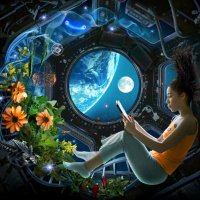
NASA Space Science
@nasaspacesci
Space is one of our many labs. Our experiments help us go farther and stay longer, while also benefiting life on Earth! 🔬 ✨ Verification: nasa.gov/socialmedia
ID: 1452706961565396996
http://science.nasa.gov/biological-physical 25-10-2021 18:42:07
1,1K Tweet
122,122K Followers
154 Following

The MISSE facility on the outside of the International Space Station exposes experiments to space. A recent study tested tech that could help quantum communications tools "self-heal" against radiation damage in space. Learn more: go.nasa.gov/43gnxEe #QuantumLeaps #ThrivingInSpace


Creating a quantum memory ⚛️ Last year @NASAGlenn researchers in partnership with Infleqtion Inc. produced NASA’s first-ever quantum memory through technology that stores information within a cloud of atoms. NASA's Glenn Research Center #quantumLeaps #ThrivingInSpace go.nasa.gov/4djMoIQ












From atomic clocks to plant DNA, NASA’s SpaceX CRS-32 Mission is packed with intriguing experiments destined for International Space Station . Learn how these payloads aim to enable space exploration and improve life on Earth. go.nasa.gov/4luY40o ISS Research






